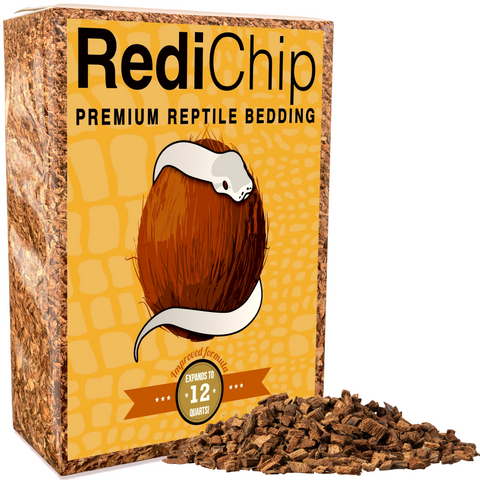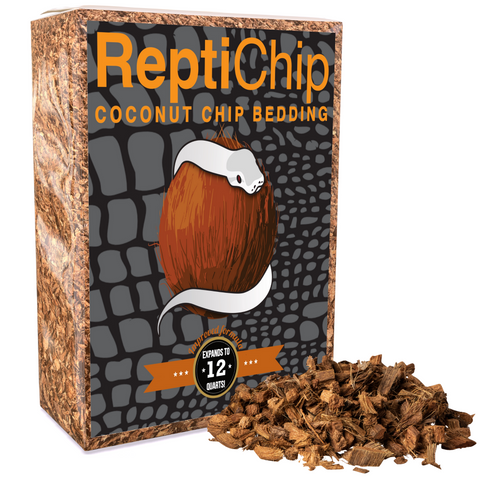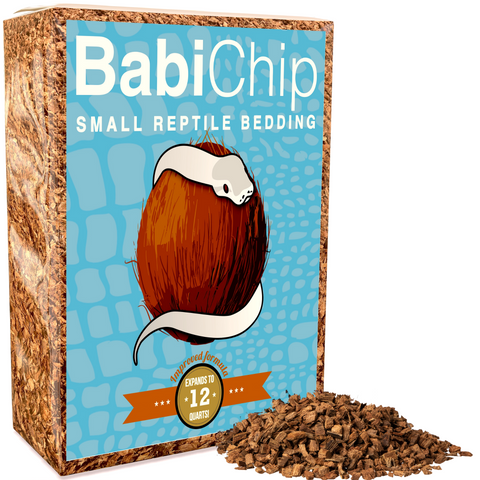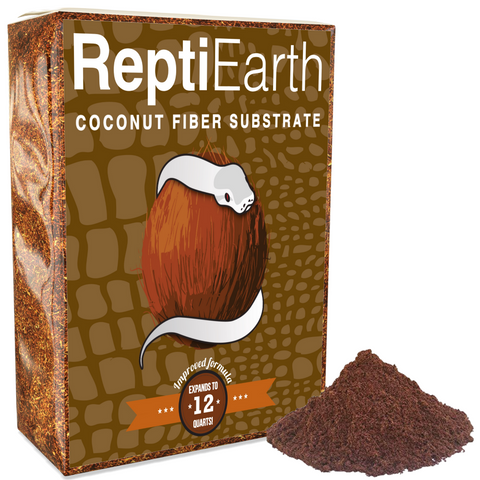Natural History
The Woma Python is a non-venomous, medium-sized snake native to arid and semi-arid regions. It undergoes a predictable life cycle, beginning as an egg laid in a concealed location such as burrows, hollow logs, or beneath leaf litter. Females typically deposit clutches of 5 to 20 eggs, which they incubate by coiling around them to regulate temperature. This maternal care ensures optimal development, and hatchlings emerge after approximately 60 to 75 days. Upon hatching, juveniles measure around 12 to 16 inches in length and are immediately independent, relying on innate hunting instincts for survival. Growth rates vary based on food availability, with individuals reaching sexual maturity between three to four years of age. Adults generally range from 4.5 to 6 feet long, though occasional specimens exceed 7 feet. In captivity, well-cared-for individuals can live over 20 years, while wild specimens tend to have shorter lifespans due to predation and environmental hazards.
This species exhibits complex behavioral patterns adapted to its unique environment. Primarily nocturnal or crepuscular, it emerges at dusk or night to hunt prey while avoiding extreme daytime heat. Unlike many pythons, it relies on burrows created by other animals for shelter, using them to escape temperature extremes. As a non-venomous constrictor, it subdues prey by wrapping its coils around the victim and applying pressure until asphyxiation occurs. Unlike many related species, it has adapted to consume a wide variety of prey, including mammals, reptiles, amphibians, and even other snakes. It differs from many pythons in its tendency to burrow, often using its narrow head to push through loose substrate. Though generally non-aggressive, the species uses defensive behaviors when threatened, such as flattening its body, hissing, or striking with a closed mouth. It rarely bites but may thrash or release foul-smelling musk to deter predators.
As a mid-sized predator, the Woma Python plays a crucial role in balancing its ecosystem. By feeding on rodents and other small vertebrates, it helps regulate prey populations and prevents overpopulation of certain species. Its specialized ability to consume other snakes, including venomous species, may provide additional ecological benefits by controlling dangerous populations. Despite its role as a predator, it faces threats from larger carnivores such as dingoes, feral cats, and birds of prey. Habitat destruction and human activity have led to declines in some populations, particularly due to land clearing and the spread of invasive predators. However, its secretive burrowing habits provide some level of protection, allowing it to survive in fragmented landscapes. Adaptations such as heat-sensitive pits on its face enable it to detect warm-blooded prey even in complete darkness, providing a crucial advantage in hunting. This combination of behavioral flexibility and physiological specialization helps the Woma Python maintain its niche in its challenging environment.
Conservation Status
The Woma Python is currently classified as Least Concern on the International Union for Conservation of Nature (IUCN) Red List. This designation indicates that, on a global scale, the species is not at immediate risk of extinction and generally maintains stable population levels across its extensive range. However, this broad classification may mask regional disparities, as certain populations have experienced significant declines.
Primary threats to the Woma Python include habitat loss due to agricultural expansion and grazing, which have led to fragmentation and degradation of their natural environments. Additionally, predation by introduced species such as foxes and feral cats poses a significant risk, particularly to juvenile pythons. In some regions, notably southwestern Australia, these combined pressures have rendered the Woma Python critically endangered, with some populations not recorded since the late 1980s.
Conservation efforts are underway to address these challenges. Captive breeding programs, such as those coordinated by the Adelaide Zoo in South Australia, aim to bolster population numbers. However, reintroduction initiatives have faced setbacks due to predation by native species like the mulga snake, which preys on young Woma Python before they reach reproductive maturity. To enhance the effectiveness of these programs, strategies such as habitat restoration, predator control, and public awareness campaigns are being implemented.
Legal protections also play a crucial role in the conservation of the Woma Python. In Western Australia, the species is listed under Schedule 4 of the Wildlife Conservation Act, affording it special protection status. This legal framework helps mitigate threats by regulating activities that could harm the species or its habitat.
While the Woma Python is not currently at risk of global extinction, regional populations face significant threats that require targeted conservation actions. Ongoing efforts in habitat preservation, predator management, and legal protection are essential to ensure the long-term survival of this unique species.
Native Range
The species is native to Australia and has a distribution that spans across various regions of the continent, primarily within the arid and semi-arid interior. Its range extends from Western Australia through parts of the Northern Territory, South Australia, and southwestern Queensland. While once more widespread, certain populations have declined due to habitat fragmentation and other environmental pressures. The species is most commonly found in remote, undisturbed regions, but in some areas, it persists in isolated populations.
This python inhabits arid and semi-arid ecosystems, including sandy desert environments, scrublands, grasslands, and open woodlands. It often occupies areas with loose, sandy soils or hard-packed clay, which allow it to burrow or seek refuge in natural cavities. Within these broad macrohabitats, the species frequently utilizes microhabitats such as abandoned mammal burrows, hollow logs, and dense vegetation for shelter. Unlike more arboreal pythons, this species is highly terrestrial and often relies on subterranean spaces for thermoregulation and predator avoidance.
The climate within its range varies significantly, with extreme temperature fluctuations between day and night. Daytime highs in summer can exceed 100°F, while nighttime temperatures may drop below 60°F. Winters are cooler, with daytime temperatures averaging between 60°F and 75°F and nighttime lows occasionally falling below 50°F. Rainfall patterns are highly variable, with most of its habitat receiving limited and erratic precipitation. However, periodic seasonal rains can temporarily increase humidity and influence prey availability, which in turn affects the python’s activity patterns.
The species is found across a range of elevations, though it predominantly occurs in lowland and mid-elevation environments, typically below 2,000 feet. It is most commonly associated with flat or gently undulating terrain with sandy or loamy soils, but it may also be found in regions with rocky outcrops or sparse vegetation. Access to small water sources, such as seasonal creeks or ephemeral pools, can be beneficial, though the python is well adapted to arid conditions and can survive long periods without direct access to standing water. Vegetation in its habitat primarily consists of spinifex grasses, acacia shrubs, and scattered eucalyptus trees, which provide shade and concealment opportunities.
This species’ survival is closely tied to the presence of suitable burrowing mammals, as it frequently uses their tunnels for shelter and ambush hunting. In areas where a decline in small mammal populations has occurred, the availability of suitable refuges may be reduced, potentially impacting python populations. Additionally, habitat degradation caused by invasive species, land clearing, and altered fire regimes pose significant threats in certain regions. Despite its adaptability, the species is increasingly reliant on conservation efforts and protected areas to ensure the stability of its remaining populations.
Behavior
The species is primarily nocturnal, becoming most active after sunset when temperatures begin to drop in its natural arid environment. While it may occasionally bask during the morning or late afternoon to regulate body temperature, it does not exhibit the extensive daytime activity seen in diurnal species. During the cooler months, activity significantly decreases, with individuals entering a state of reduced metabolic function known as brumation. During this period, they may remain inactive for extended durations, emerging only occasionally to drink water. In captivity, this seasonality can be replicated by adjusting temperature gradients to encourage natural rhythms, although some specimens may remain active year-round if consistently warm conditions are provided.
This species is primarily solitary, with individuals exhibiting little tolerance for close contact outside of the breeding season. While not particularly aggressive toward conspecifics in the wild, encounters between adults are infrequent due to their tendency to avoid each other’s ranges. During the breeding season, males engage in combat for access to females, intertwining and attempting to overpower one another in displays of dominance. This species is oviparous, and unlike many other pythons, females engage in maternal brooding behavior. After laying eggs, the female will coil around them, remaining with the clutch to regulate temperature through muscular contractions. In captivity, this maternal behavior can be observed in undisturbed breeding females, although artificial incubation methods are commonly employed.
This species demonstrates a heightened sensitivity to environmental changes, particularly temperature fluctuations. When ambient temperatures drop too low, it will seek refuge within burrows or beneath natural cover to conserve heat. In excessively high temperatures, it will engage in behavioral thermoregulation by moving to shaded areas or submerging itself in available moisture sources. Humidity also plays a role in its overall well-being, as improper moisture levels can result in shedding difficulties. Light cycles strongly influence feeding response and general activity, with dusk and nighttime providing prime conditions for hunting behavior. When confronted by potential predators or human handlers, this species relies on a combination of passive and active defense mechanisms. It often remains motionless, relying on cryptic coloration to blend into its surroundings, but when disturbed further, it may exhibit erratic movement or coil into a defensive posture. Unlike many other pythons, it lacks the ability to deliver a significant bite response due to its reduced tooth structure, relying instead on intimidation tactics such as mock strikes.
A distinctive aspect of its behavior is its hunting technique. Unlike many other pythons that rely on ambush tactics, this species is an active hunter, frequently utilizing burrows and confined spaces to locate and subdue prey. It often presses its body against tunnel walls to immobilize prey rather than relying solely on constriction, a technique believed to have evolved due to its predation on small mammals and reptiles in tight environments. This ability makes it uniquely adapted to consuming prey that other ambush-based pythons may struggle with. Additionally, it exhibits high food drive and will opportunistically consume a wide variety of prey items.
Compared to wild individuals, captive specimens tend to exhibit reduced exploratory behaviors due to the confined environment. However, they retain their opportunistic feeding response, often readily striking at presented food in daylight conditions despite their nocturnal instincts. Stress responses in captivity can vary, with individuals showing either high tolerance to handling or increased head-shy tendencies depending on prior experience with human interaction. Enrichment, such as providing varied climbing structures and burrow-like hides, helps encourage natural activity and reduce stress-related behaviors such as excessive pacing or hiding. While aggression between conspecifics is rare under controlled conditions, cohabitation is not recommended due to the possibility of competition and feeding-related injuries.
Captivity Requirements
Enclosure Design
A properly designed enclosure is essential for the long-term health and well-being of this species. Juveniles can be housed in a secure enclosure measuring at least 3 feet long, 18 inches wide, and 18 inches tall, though larger is always preferable to promote natural behaviors. Adult specimens require a minimum enclosure size of 4 feet long, 2 feet wide, and 2 feet tall, though larger individuals will benefit from enclosures measuring 6 feet long or more. These snakes are active and benefit from space to explore, even though they spend much of their time in burrows or under cover in the wild.
Enclosure materials should provide both durability and proper insulation. PVC enclosures are highly recommended due to their lightweight nature, excellent heat retention, and ease of cleaning. Custom wooden enclosures with sealed interiors can also work well, provided they resist moisture buildup. Glass terrariums are acceptable for juveniles but tend to struggle with maintaining stable temperatures and humidity levels for adults, so modifications may be necessary. Ventilation is important, and enclosures should have appropriate cross-ventilation to prevent stagnant air while retaining enough humidity.
In terms of layout, this species benefits from an environment that mimics the arid and sandy habitats they inhabit in the wild. A securely anchored stack of flat rocks or cork bark provides essential hiding spots, which these snakes use frequently for security. Multiple hides should be placed throughout the enclosure, with at least one on the warm side and another on the cooler side. Climbing opportunities, such as thick branches and sturdy logs, should also be included, as this species sometimes climbs when given the opportunity. The enclosure should have a dedicated basking area on the warm end, with an open space allowing the snake to comfortably coil without obstruction. Secure latches and reinforced seams are necessary to prevent escapes, as these snakes are strong and capable of pushing loose-fitting glass doors or lifting lightweight screen lids.
Lighting and Heating
Providing the correct temperature gradient is essential for maintaining this snake’s metabolism, digestion, and overall health. The basking area should reach approximately 88-92°F during the day, with a thermal gradient that allows cooler areas to remain between 75-80°F. At night, temperatures can drop slightly but should not fall below 72°F. Heating elements should always be regulated by a reliable thermostat to prevent overheating, as this species has a tendency to burrow and may not avoid dangerously hot surfaces. Under-tank heating pads controlled by a thermostat or radiant heat panels mounted inside the enclosure are ideal primary heat sources, while overhead ceramic heat emitters can supplement warmth as needed. Heat rocks should never be used due to the risk of burns.
While this species does not require UVB to survive, providing low-level UVB exposure can enhance overall health and well-being by aiding vitamin D3 synthesis and encouraging more natural behavior. A 5-7% UVB tube, such as an appropriate T5 HO fluorescent bulb, should be placed between 10-12 inches above the basking area, with access to shaded areas to allow for natural self-regulation. The UVB fixture should include a reflective hood to maximize output while preventing excessive dissipation. Photoperiods should mimic natural daylight cycles, with 10-12 hours of light per day. Seasonal adjustments can be made by shortening the light cycle slightly during winter months to encourage natural behavioral rhythms.
Substrate and Enrichment
Choosing an appropriate substrate is critical to replicating the arid, loose soil conditions that this species naturally favors. A mixture of ReptiChip Mixed Coarse Chip, ReptiEarth Coconut Fiber Mix, and a small proportion of sand provides a balance of moisture retention and ease of cleaning. This combination resists mold while maintaining sufficient humidity without becoming overly damp. Avoid reptile carpet, as it fails to allow for natural burrowing behaviors and can harbor bacteria.
Enrichment is crucial to reducing stress and allowing for natural behaviors. This snake frequently burrows, so providing loose substrate that allows for digging is highly recommended. Large pieces of cork bark or wooden hides burrowed slightly into the substrate will encourage natural hiding tendencies. Additionally, placing irregularly shaped rocks, logs, and even artificial tunnels within the enclosure increases environmental complexity and encourages exploration. Though they are primarily ground-dwelling, they will occasionally use low-hanging branches, so sturdy climbing structures can be included. Providing multiple shelter options at different temperature zones improves thermoregulation and reduces stress.
Humidity and Hydration
Maintaining proper humidity levels is essential for hydration and shedding. The enclosure should maintain a relative humidity level of approximately 40-50%, which reflects the species' natural habitat in semi-arid regions. This humidity level ensures proper respiratory health and normal shedding cycles without encouraging bacterial growth. Periodic misting may be necessary depending on local climate conditions, though care should be taken to avoid excessive dampness in the substrate. Placing a humidity hide filled with slightly moistened sphagnum moss on the warmer end of the enclosure can provide an additional humid microclimate to aid in shedding.
Fresh water should always be available in a sturdy, shallow bowl that is large enough for the snake to coil partially inside. Although they do not frequently soak, having access to water encourages drinking and aids in hydration. In drier climates, occasional light misting of enclosure surfaces can simulate morning dew, which some individuals may prefer to drink. Monitoring humidity with an accurate digital hygrometer is recommended, as fluctuations can lead to shedding complications or dehydration if levels drop too low.
Diet & Supplementation
The species is a nonvenomous carnivorous constrictor that primarily preys on a variety of vertebrates in its natural arid and semi-arid environment. It primarily consumes small to medium-sized mammals, such as rodents and marsupials, as well as reptiles, including other snakes and lizards. Unlike many other pythons, it is an opportunistic feeder and is known to consume a broader variety of prey, including birds and their eggs. In the wild, its diet shifts based on seasonal availability, and it is well adapted to surviving in environments where prey may be scarce. Juveniles tend to consume smaller prey items such as lizards and small rodents, while adults target larger prey. Cannibalism has also been observed in this species, with some individuals preying on other snakes, including members of their own species.
This python employs an active hunting strategy rather than relying solely on ambush predation. It actively seeks out prey, often pursuing it into burrows or crevices. A unique adaptation of this species is its behavior of using its smooth, muscular body to push against burrow walls while constricting prey in confined spaces, which helps restrict movement and expedite suffocation. Constriction is the primary method of subduing prey, with the snake coiling around its target and tightening its grip each time the prey exhales. Unlike some other pythons, it lacks heat-sensing pits, meaning it predominantly relies on visual cues and an acute sense of smell, using its forked tongue to collect scent particles and analyze them via the Jacobson’s organ.
Dietary preferences and metabolic needs change throughout the reptile’s life stages. Juveniles require frequent feeding, typically every 5 to 7 days, to support rapid growth. They consume proportionally small prey items, such as pinky or fuzzy mice, small lizards, or appropriately sized birds. As they reach adulthood, feeding frequency decreases, with adults requiring meals every 10 to 14 days. Larger individuals may go several weeks between meals in cooler months when metabolic rates drop. Seasonal shifts in feeding behavior may also be observed, with some individuals reducing food intake during cooler periods, though this varies among individuals.
In captivity, the diet should closely mimic its natural feeding habits to ensure proper nutrition and overall health. The primary food source for captive individuals consists of appropriately sized rodents, such as mice and rats. Adult specimens should be fed medium to large rats, ensuring that the prey item is no wider than the thickest part of the snake’s body. To provide dietary diversity and prevent nutritional deficiencies, occasional offerings of quail, chicks, or reptile-safe frozen thawed prey such as appropriately sized lizards can be considered. Whole prey items provide the necessary nutrients, though supplementation with calcium and vitamin D3 may sometimes be required, particularly for juveniles or reproductive females. Prey should always be offered pre-killed or frozen-thawed to prevent injury, as live prey can inflict wounds if the snake fails to subdue it quickly.
Captive individuals may exhibit feeding challenges, particularly during seasonal refusals or periods of stress. Some individuals may reject prey if they are housed in inadequate conditions, such as improper temperatures or excessive handling. Providing a secure, low-stress environment with proper thermal gradients is crucial to maintaining healthy feeding behavior. Obesity can become an issue in captivity, particularly if prey is offered too frequently or if feeding is not adjusted based on activity levels. Conversely, malnutrition can arise from an inadequate diet or improper supplementation. Additionally, some individuals may become fixated on one type of prey, refusing alternative options, which can lead to nutritional imbalances. Maintaining variety in the diet and offering prey in a manner that encourages natural hunting behaviors, such as placing food near burrow-like structures or gently moving thawed prey with tongs to mimic live movement, can encourage natural feeding responses. Proper feeding schedules and careful observation of consumption rates can help prevent common issues and maintain overall health.
Reproduction
Woma Pythons reach sexual maturity at different ages depending on their sex and overall growth rate. Males typically become reproductively viable by two to three years of age, whereas females often require three to four years before they are physiologically capable of producing viable clutches. Sexual dimorphism in this species is subtle, with females generally growing to larger sizes than males, though this is not always a reliable method for distinguishing sexes. Proper sex determination is best performed using probe or pop sexing methods conducted by an experienced handler or veterinarian.
Courtship and mating behaviors in Woma Pythons are seasonal, largely influenced by environmental cues. Males demonstrate increased activity and interest in finding receptive females during the breeding season, which generally coincides with cooler months. In captivity, introducing seasonal adjustments in temperature, photoperiod, and humidity can encourage reproductive readiness. Courtship behavior involves the male engaging in chin rubbing along the female’s body, followed by coiling alongside her. If receptive, she will allow copulation, which can last several hours and may occur multiple times over the course of several weeks to ensure fertilization. Some mild combat has been observed between rival males in the wild, though this is rarely necessary in captive settings, as careful mate selection helps prevent aggression.
To encourage breeding, environmental conditions in captivity should mimic the species’ natural seasonal fluctuations. A slight drop in nighttime temperatures, typically to around 65–70°F, along with a slight reduction in photoperiod, can trigger reproductive behaviors. Daytime temperatures should still allow for basking, maintained at approximately 85–90°F, to prevent any negative impacts on digestion or immune function. Humidity levels should not drop too low during this period, as overly arid conditions can result in dehydration, which may negatively impact reproductive success.
Woma Pythons are oviparous, meaning they lay eggs rather than giving birth to live young. As breeding pairs are introduced, it is essential to monitor their interactions to ensure compatibility. Some females may reject certain males, and persistent unsuccessful pairings may require swapping mates. Copulation success is often signified by locked pairs remaining intertwined for extended periods. Following successful mating, a female will require optimal conditions for the development of her follicles and eventual oviposition. Nesting areas should be provided in the form of secluded, humid hide boxes or nesting chambers filled with slightly moist substrate, as inadequate conditions may result in egg retention or infertile clutches.
Breeding challenges in captivity often stem from environmental inconsistencies, improper conditioning, or behavioral incompatibilities between individuals. Some females may not develop viable follicles if their nutritional intake or body condition is insufficient prior to the breeding season. Stress, including excessive handling or disruptions to their environment, may also contribute to failed reproductive attempts. Ensuring a well-balanced diet, stable environmental conditions, and sufficient cooling periods before the breeding season can help address these issues. In cases where compatible pairs fail to breed despite optimal conditions, hormone cycling or more precise environmental manipulations may be necessary to encourage successful reproduction.
Incubation & Neonate Care
The Woma Python is an oviparous species, meaning it reproduces by laying eggs. Females typically lay a clutch of 5 to 20 eggs, with the number influenced by factors such as age, size, and overall health of the individual. Once eggs are laid, the female coils around them, providing some degree of thermoregulation and protection. However, in captivity, artificial incubation is recommended for greater control over temperature and humidity, leading to higher hatch success rates.
For optimal egg development, incubation temperatures should be maintained at 86 to 89 degrees Fahrenheit. A consistent temperature within this range is critical, as prolonged exposure to higher temperatures can cause developmental defects, while lower temperatures may extend incubation time and reduce hatch rates. Humidity should be maintained at approximately 80 to 90 percent to prevent desiccation of the eggs. A suitable incubation substrate consists of a moisture-retaining material such as vermiculite or perlite, mixed with water at a ratio that prevents excess moisture buildup. Water levels should be monitored regularly to ensure conditions remain stable throughout the incubation period.
Incubation typically lasts between 60 and 75 days, though the exact duration can vary based on temperature fluctuations. Woma Pythons do not exhibit temperature-dependent sex determination, meaning the sex of the offspring is genetically determined rather than influenced by incubation temperatures. As hatching nears, the neonates will use their egg tooth to slice through the eggshell in a process called pipping. After opening their eggs, neonates often remain inside for a day or two as they absorb the remaining yolk before fully emerging. It is important to avoid interfering with this process unless an individual is visibly struggling to exit the egg.
Neonates should be housed separately after hatching to ensure proper feeding, reduce stress, and minimize the risk of cannibalistic behavior, which has been noted in some closely related species. A small enclosure with secure hides, a thermal gradient, and appropriate humidity levels will provide an environment conducive to healthy growth. Ambient temperatures should range from 78 to 82 degrees Fahrenheit, with a basking spot maintained at 90 to 92 degrees Fahrenheit. Humidity levels should be kept between 50 and 60 percent, ensuring proper hydration without causing excessive dampness.
Providing appropriately sized meals is crucial for neonate development. Hatchlings should be offered their first meal approximately one week after shedding, which usually occurs 7 to 10 days post-hatch. Suitable prey items include appropriately sized rodents, such as pinky or fuzzy mice, depending on the size of the individual neonate. Feedings should be offered every 5 to 7 days to maintain steady growth. Fresh water must always be available, and enclosures should be kept clean to prevent bacterial or fungal infections.
Handling of neonates should be minimal during the first few weeks to allow them to acclimate to their environment and establish a feeding routine. If handling is necessary, it should be done gently and with care to avoid causing stress or defensive behaviors. Monitoring for common health concerns such as dehydration, retained shed, or failure to thrive is essential during this period. With proper care and stable environmental conditions, neonate Woma Pythons typically establish consistent feeding behaviors and grow into robust juveniles prepared for long-term captive care.
Conclusion
The Woma Python is a fascinating and ecologically significant species that thrives both in its native arid environment and in well-maintained captive settings. Its adaptability, unique hunting behavior, and generally calm disposition make it a popular species among reptile enthusiasts. However, responsible husbandry is crucial to ensuring its long-term health and well-being. Providing an appropriately sized enclosure, maintaining optimal temperature and humidity gradients, offering a varied and nutritionally balanced diet, and implementing enrichment strategies that encourage natural behaviors all contribute to a healthy captive individual.
Conservation efforts remain a key consideration, as wild populations have declined in some regions due to habitat destruction, invasive predators, and other anthropogenic factors. While legal protections and captive breeding initiatives have helped mitigate some risks, continued support for habitat preservation and responsible captive management is essential to securing the species’ future. Keepers should always ensure that any specimens acquired for captivity come from reputable, ethical sources that prioritize the preservation of genetic diversity and the prevention of illegal collection.
For those considering keeping this species, commitment to its long lifespan, specific environmental requirements, and feeding habits is necessary. Understanding its natural behaviors, such as nocturnal activity patterns and burrowing tendencies, can enhance its quality of life in captivity. Regular monitoring of health indicators, including hydration levels, body condition, and feeding responses, will help prevent common issues associated with improper husbandry.
With proper care, this species can thrive and serve as an excellent example of the balance between captive husbandry and conservation awareness. By maintaining best practices in reptile care, keepers contribute not only to the well-being of individual snakes but also to broader efforts supporting the conservation of a unique and important member of the ecosystem.











